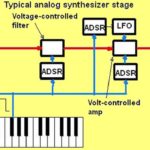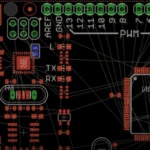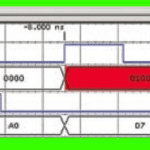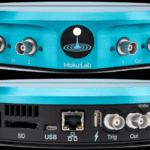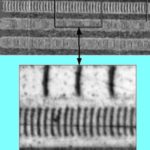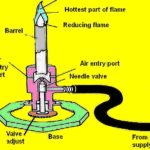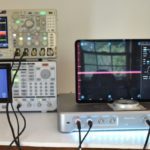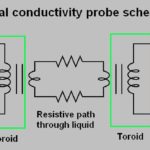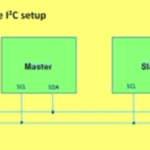A pure musical note from a tuning fork is a basic sine wave. The same note played on a trumpet will look like a saw-tooth wave when displayed on an oscilloscope. The same note from a flute will be a triangular wave. But the same note from a clarinet may appear to be closer to […]
Here’s a rundown on free layout/PCB software
There are dozens of free PCB-layout and schematic packages available on the Web. Often they are stripped-down versions of more complex packages available for licensing. Often, the process of upgrading from freeware to more sophisticated versions is pretty easy. If your circuit needs are generally confined to relatively straightforward two-layer boards, here are a few […]
Catch that glitch: Finding race conditions
Among the problems circuit designers have to contend with in their fast and complex electronic environment are race conditions. The term used to be exclusively applied to electronic logic problems but has now been adopted by software engineers working on multithreaded programs. Briefly, software race conditions arise in multithreaded software when multiple threads attempt to […]
Don’t touch that! Things they don’t teach you in circuits lab
The domain of most electronics engineers these days is confined to voltage levels ranging from microvolts on up to a few hundred volts. But when electronic equipment fails or there’s a problem with facility wiring, these same engineers may, in a pinch, be called upon to do basic troubleshooting of power levels far beyond their […]
FPGA-based instruments: Inside the Moku benchtop test gear
The roots of the venerable Moku:Lab, Moku:Go and Moku:Pro test gear from Liquid Instruments can be traced back to a sophisticated interferometer set to orbit the earth. As part of his PhD work, Liquid Instruments CEO Daniel Shaddock documented the design of the control system for the LIGO mirror, which had to be stabilized at […]
How to look at magnetic domains
A central concept in magnetism is the domain, discovered in 1906 by Pierre-Ernest Weiss. He theorized that in any magnetically permeable material, a large number of mostly microscopic regions existed as separate walled-off entities. In each of these entities, called domains, the atomic moments align in parallel when magnetized. But the alignment of individual domains […]
The difference between Robert Bunsen’s burner and a gas stove
Jointly Robert Bunsen and Gustav Kirchhoff invented the spectroscope, which they used to identify spectra produced by sodium, lithium and potassium when they were heated to incandescence. This was possible only because previously with a lab assistant Bunsen had perfected a gas torch that did not emit interfering light. Their Bunsen burner has remained in […]
Instrument road test: The Liquid Instruments Moku:Pro
Liquid Instruments, an Australian company (there is also a U.S. office near San Diego), is offering a new diagnostic and product development tool that enhances the ability of laboratories and educators to see ever deeper into waveforms of interest. Previous instruments were Moku:Lab and Moku:Go. While these units were robust diagnostic engines, Moku:Pro puts it […]
When to measure conductivity instead of resistivity
Resistivity and its inverse, conductivity, are different from the more familiar metrics, resistance and its inverse, conductance. Resistivity is applicable to types of materials. For example, glass and carbon have specific resistivities whereas a particular carbon resistor of a given length, diameter and temperature has a specific resistance. In a nutshell, resistance is defined as […]
Examining serial protocols with test instruments
There are currently a large number of serial protocols in use. Many oscilloscopes include the capability to decode and display data sent over widely used serial buses. Recently, a blog on the Tektronix website detailed which serial decode packages engineers most commonly configure on the Tektronix scopes they order. The buses that turn out to […]
